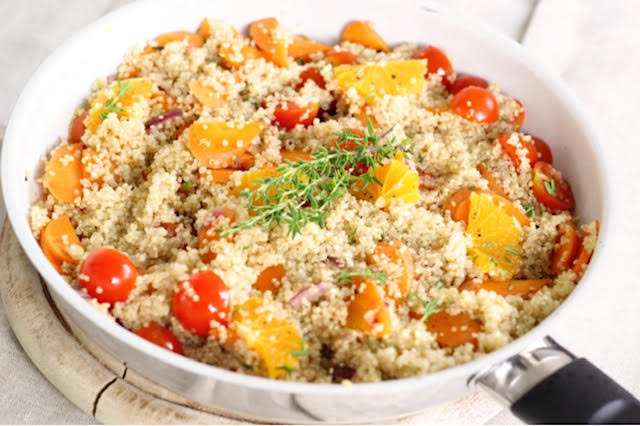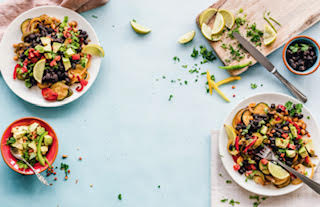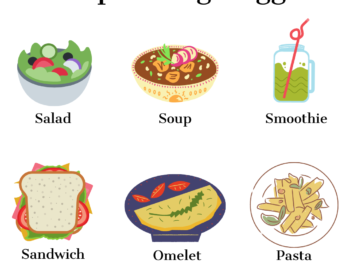With the low-carb movement, and the keto diet in full swing, so many clients that I coach fear eating grains and starches altogether, and think they are better off without them. This is false!! Certain starches are not particularly healthy such as bagels and muffins; they are oversized and each are equivalent to eating around 6 slices of bread. But many grains–whole grains–are indeed healthy and should be included as part of a healthy diet. Indeed, current recommendations suggest that at least half of our grains be whole grains. Here’s why.
Including whole grains in your diet is a great way to boost your nutrient intake. They are loaded with vitamins and minerals including B vitamins, vitamin E, magnesium, selenium, and protective phytonutrients. A good source of fiber and complex carbohydrates, they are relatively low in calories and fat. It is no surprise that diets rich in whole grains may offer protection against heart disease, stroke, type 2 diabetes, hypertension, and certain cancers.
Whole grains are healthier than processed grains because they provide many more nutrients. They also offer a greater sense of fullness in people who eat them. Whole grains are made from the whole kernels of grain, including both the inside part of the grain and the outer covering. Processed grains remove the outer covering along with a lot of the nutrition and fiber. Fiber helps prevent constipation, and may cut the risk of heart disease, diverticulosis, and certain cancers.
Most Americans do not consume enough whole grains. For many of us, eating more whole grains requires learning about foods rarely seen in the traditional American diet. As you will see below, many delicious and nutritious grains exist. And, if you are gluten free, no need to worry, as many terrific and versatile grains are now readily available on the market.
Skip the white pasta and white rice and include healthy grains instead: brown rice, kasha, quinoa, spelt, and whole wheat pasta, to name a few. Here are some nutritional benefits of some healthy, tasty, and versatile grains:
Amaranth is a great grain for those with gluten intolerances and wheat allergies. It also has a terrific nutritional profile. One cup of cooked amaranth delivers lots of fiber, protein, and is rich in minerals including iron, magnesium, manganese, and phosphorus. It also contains betalains, a class of antioxidants that may help reduce inflammation.
Barley is a good source of soluble fiber which may reduce cholesterol and stabilize blood sugar levels. Barley contains B vitamins, and the minerals selenium and copper. While pearled barley is not technically a whole grain, as it is polished, and some nutrients are lost, hulled barley is healthier, and contains more fiber, vitamins, and minerals. However, even pearled barley is a healthier alternative to refined grains such as white rice, couscous, or pastas made from white flours.
Brown rice is a much better choice than white rice. It contains fiber, B vitamins, and a variety of minerals. It contains nearly three times the fiber as white rice. A mere ½ cup serving of cooked brown rice contains nearly a half day’s worth of the mineral manganese which works with various enzymes facilitating body processes.
Buckwheat brought to America by Russian and Polish immigrants who called it “kasha,” is a good source of the minerals manganese, magnesium, and zinc, as well as flavonoids like quercetin and rutin which contain antioxidant and anti-inflammatory properties. A great choice for those following a gluten free diet. One cup cooked Kasha contains 5 grams of fiber. Kasha is one of my favorite grains!! It also freezes really well.
Bulgur wheat is higher in fiber than most grains. One cup cooked bulgur contains 8 grams of fiber. The insoluble fiber it contains is helpful in preventing constipation and diverticular disease. It also contains iron, magnesium, manganese, and B vitamins. Because bulgur is made from precooked wheat berries, it can be reconstituted by soaking or by simmering. It’s wonderful nutty flavor and light texture makes it a great choice for salads and side dishes.
Millet contains manganese and phosphorus which may contribute to bone health. It is also rich in B vitamins, especially niacin, B6, and folate. Added bonus: it is gluten-free.
Oats are a good source of soluble fiber and contain beta-glucans which helps lower cholesterol and stabilize blood sugar levels. They also contain insoluble fiber which prevents constipation and promotes regular bowel movements. Moderate amounts of pure, uncontaminated oats are tolerated by most people with celiac disease, but it is important to be aware that many commercial oat products on the market have been cross-contaminated with wheat, barley and/or rye.
Quinoa is a nutrition treasure and has a protein content that is superior to that of most grains, because it contains all the essential amino acids. It is high in the amino acid, lysine, which is important for tissue growth and repair. It is also rich in the minerals iron, magnesium, manganese, phosphorus and copper, and a great choice for the gluten free.
Spelt has gained popularity as a healthy and delicious grain due to its nutty flavor, high protein and nutrition content. It is low in fat, high in fiber, and contains B vitamins and minerals including potassium, magnesium, manganese and copper. And it has gained a following for those intolerant to wheat. Many people with wheat allergies can tolerate spelt well.
Whole wheat products are not stripped of nutrients and fiber like refined products. Whole wheat foods such as whole wheat pastas, breads, and couscous contain insoluble fiber, which prevents constipation and may be protective against certain cancers. They also contain an array of vitamins and minerals.
Aim for 100% whole wheat products such as whole wheat pasta and couscous.
Wild rice is high in protein and fiber and low in fat. It also contains the minerals potassium and phosphorus and B vitamins.
Savvy shopping tip: Choose grains that are 100% whole grain. When reading food labels, look out for words such as “multigrain” or “stoneground” which do not necessarily mean whole grain. And the phrase “made from whole grain” is generally used on products that aren’t 100% whole grain.





 Nourish your body and soul this fall season
Nourish your body and soul this fall season